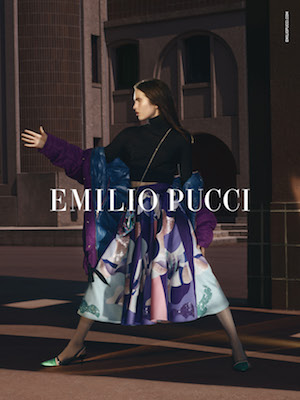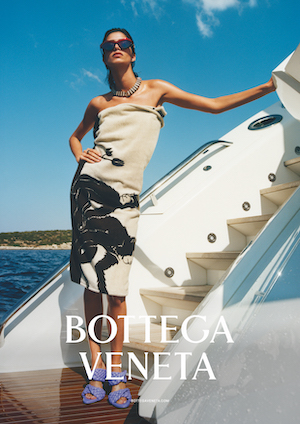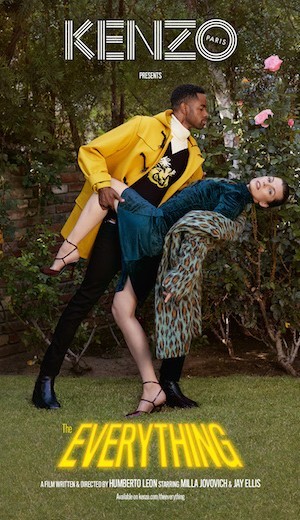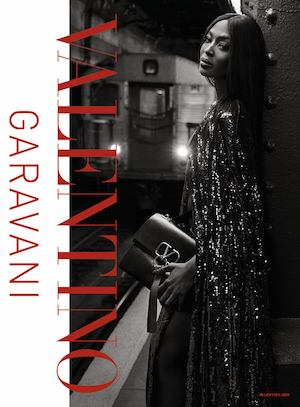Michael Kors: The $3 billion bag man
You don’t need to have any idea who Michael Kors is to know that his handbags have taken over the world. They’re suddenly everywhere, those unobtrusive leather totes in camel or navy or black or dark red; identifiable by the logo (gold, capitalized) and the metal MK key fob that dangles from the straps.
Those bags are hooked onto the arms of commuting office workers and the stars of Made in Chelsea alike; they bounce against the hips of school-gate moms; they are embraced by first ladies, movie stars, front-row fashion women, chairs of the board. Heidi Klum’s got several; so have Rosie Huntington-Whiteley, Gwyneth Paltrow, Angelina Jolie, my next-door neighbor and the lady who’s just walked into the coffee shop in which I’m currently seated. Those bags have perpetuated a deft takeover of the accessories scene; advancing from the realms of no-one’s-that-bothered to all-out ubiquity in a year.
Unsurprising, then, that those bags are the major factor in elevating Michael Kors – a 54-year-old New York-based designer – to fashion superpower status. Kors launched his self-named womenswear label in 1981; in 2002, he expanded into menswear; in 2004, he launched cheaper womenswear diffusion and accessories lines: one called Michael Michael Kors; the other Kors Michael Kors, a naming policy designed to blur the distinction between his expensive and less expensive offerings. Yet it’s only now, in 2014, 33 years into the lifespan of his brand, that things have really taken off.
And I mean really. In February, Kors’ personal wealth scored him his first entry on the Forbes billionaires’ list. At the end of May, his holdings company announced annual results which showed a 51.8 percent rise in total revenue year on year to $3.3 billion, up from $2.2 billion in 2013. In the past three financial quarters, Kors has opened 133 stores, predominantly in Europe, North America and Asia. There are 533 stand-alone stores now bearing his name – and flogging his gently branded goods – everywhere from London to Dubai to Singapore to Hong Kong; this figure is expected to rise to 575 by the end of 2014, and to 700 within the next few years. As a result, Time magazine named Kors among its 100 most influential people in the world – he made it into the “Titan” sub-category, alongside Sheryl Sandberg and Jay-Z.
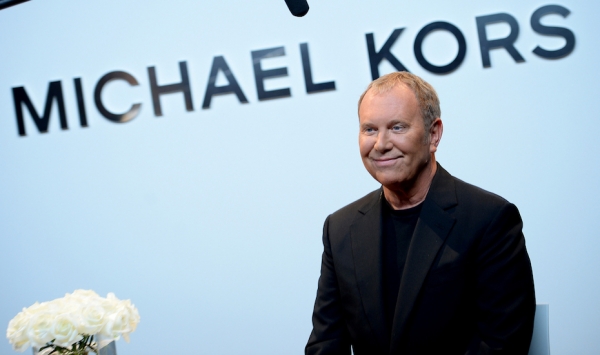
“That was amazing, quite honestly,” he tells me. “But it wasn’t just my acknowledgment. It was fashion’s acknowledgment.”
Kors and I are sitting in his five-star suite, 12 floors up above the fancy Bund district of Shanghai. We’ve got views over a city so prosperous, so newly and obviously wealthy, its skyline evolves pretty much in front of our eyes. The tension between that unbridled new wealth and all the decadence and possibility it entails, and established, ingrained Communist governance, is palpable and complicated. You can buy pretty much anything here, but you can’t get on Facebook or Twitter.
It’s the morning after Kors has opened the doors on yet another store, his first in mainland China. The event drew a big crowd and sparked much excitement, not least because Kors flew in supermodel Miranda Kerr for the night. Kerr wore head-to-toe Michael Kors and draped herself becomingly over the man himself, while he cut the ribbon on the store front. Every member of the large, rapt crowd held their phones aloft to capture the moment digitally.
Do you feel like a powerful person, I ask Kors. He pauses. He contemplates. He is ageless in that moneyed, middle-aged, upscale New York way: smooth-cheeked and year-round tanned. He wears what he refers to as his “uniform”: jeans, black T-shirt, loafers. (“I would never wear all accessible,” he’ll tell me, of his personal style principles, “but I would never wear all precious. So I wear a T-shirt, but I wear crocodile shoes.”) He’s removed the all-black aviator sunglasses he habitually wears; the ones he kept on throughout the ribbon-cutting ceremony, despite the fact that the Shanghai store stands deep in the heart of an indoor mall, and the ribbon-cutting happened long after sunset.
“Do I feel like a powerful man? Hmm ... Do you know when I feel powerful, honestly? It’s when I see a lot of what I’ve designed on the street. In an airport. In a restaurant. And I don’t know if powerful is the word. Impactful! Impactful is the word. Actually, the other night ... This sums it up! This says it all. Monday night was the Met Ball in New York. Fabulous mix of people. And we had a great group of women with us. Zoe Saldana and Jessica Paré from Mad Men, who is not only talented, by the way, but very funny. And so it’s all quite glamorous, and we’re leaving the museum, and as we get to the exit, Jessica said to me, “Oh, look at the woman over there who’s a museum guard.” And I looked over and she had a Michael Kors MK belt on. And I looked at her and I said, ‘Oh my God, I love your belt!’ And she got all flustered. And I said, ‘I’m as excited that you’re wearing that belt as Jessica Paré wearing this gown.’ ”
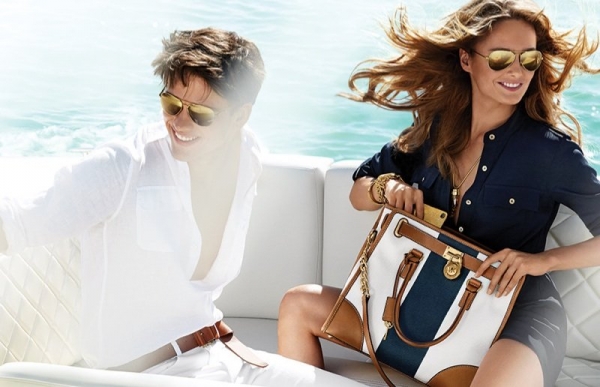
I’m trying to work out what it is that Kors is doing so right. Why is he, above all other fashion designers, so incredibly successful? Why now? Kors went bankrupt in 1993; how has a design vision and business approach that failed 20 years ago subsequently achieved such unbridled success?
Because honestly, it is not blindingly obvious. Kors built his business from a base of what he refers to as “luxury sportswear”, although my concept of sportswear (leggings, trainers, hoodies, etc.) and his (according to his current collection: leather T-shirts, belted swimsuits, trenchcoats over shorts suits) are rather different. Anyway, the result is glamorous, but not oppressively so; sexy, but not lewd; smart and serviceable, nothing that’ll scare the horses, good for the office and then early drinks. But: exceptional enough to merit such an aggressive expansion plan and a 51.8 percent annual profit rise?
I get my first insight into Kors’ money-spinning mindset during a press conference in an office suite in a Shanghai shopping district. It’s the afternoon before the ribbon-cutting. I join a group of around 100 other journalists, most of whom are Chinese; Kors takes to the stage, where he’s met by a group of models dressed in his designs.
Kors begins to talk: a beguiling myth about the world we inhabit, the world his clothes and accessories are designed to accommodate. It hinges on the idea that we are all now part of the jet set. “Well,” he says, “we either are – or we want to be.” This is the principle according to which he makes clothes, because, “The true jet-setter needs a wardrobe that works as well in New York as it does in Shanghai, or Capri, or St Moritz. It needs to offer practical glamour for modern jet-setters like Kate Middleton. The woman who wants it all. Who’s in London for a meeting, then Paris for lunch, then she’s in Gstaad for skiing.”
On and on Kors goes, with his fluent fashion evangelizing (“There are no rules. We never thought women would wear bare legs in the winter and boots in the summer, but now they do”), his rhetoric (“Glamour is in our DNA”) and his capacity to name-check celebrities to the point that you begin to think you know them as well as he does (and according to the slide show that accompanies the talk, and which comprises endless shots of Kors with his famous friends – he does).
“I am so intrigued,” he says, “to see how Angelina and Brad get off the plane.”
He tells us about his own education in high glamour, about his grandmother, who dressed in furs and never traveled without her extensive wig collection; about his mother, Joan, a model who remarried when Kors was five, and asked her son to help design her wedding dress.
“I said, ‘Cut the bows off it. Simplify.’ ”
It’s a bewitching display. After 15 minutes, and quite despite myself, I begin wishing I were Kors’ “true jet-set woman”. I begin thinking: “Maybe I am! And even if I’m not, I should probably dress as if I am, no?” It is certainly part of how Kors built a multi-billion-dollar business: by telling women a story about themselves that they really want to hear; the L’Oréal “You’re worth it” principle.
We move smoothly into a Q&A session with the journalists, many of whom have accents so thick, Kors doesn’t understand what they’re asking him, but that’s OK: he can carry on with the jet-set rhapsodies. “Everyone moves fast now; not just Angelina Jolie. Not just people with a private plane.” Someone asks him if he considers himself a feminist. “Well,” he says, “I am empathetic for women’s lives. There are a lot of women in my family. My mother, who is head-to-toe in Michael Kors. My aunt, who wore a bikini to my bar mitzvah. I understand that women are juggling. I want to see a woman dance and sit and have fun in my evening dress. And so, yes, you could say: ‘Michael Kors is a feminist.’ ”
Does everyone secretly want to be glamorous, I ask. “In some way,” he says. Did he always want to be glamorous?
“Always, always, always.”
Kors was born Karl Anderson Jr. on Long Island, New York, in 1959, to Joan and Karl Anderson. His mother and father divorced when he was young. When Joan remarried Bill Kors, she told her son that he could change his first name as well as his surname if he wanted – which he did, becoming Michael Kors. Kors’ grandparents, and his mother, were “obsessed by fashion”, and so he became hooked, too. “I was an only child. I was my mother’s shopping partner.” In 2011, he married his long-term partner, Lance LePere, in a barefoot ceremony on Dune Beach on Long Island, following the legalization of same-sex marriage in New York.
In the hotel suite, I ask Kors about the first time he remembers truly caring how he looked. “The first time I went away somewhere warm. My grandparents took me to Florida. I was probably six. And my grandfather said, ‘Before we leave, you need a new pair of white trousers; you need to get a pair of white shoes, a new navy jacket with gold buttons.’ He said, ‘You’ll be wearing your jacket on the plane.’ And I remember getting dressed up for the plane, and arriving in Florida and having sunglasses. And, of course, all I wanted was to be really tanned. I was six years old; I ended up burning to a crisp. My grandfather said, ‘Don’t worry. It’ll be fine in two days.’ ” Kors will tell me later that his number one vice is “sun. Mmmm.”
Was a career in fashion inevitable?
“I had two other thoughts. We had the Saarinen TWA terminal in New York, and I was blown away by the building. So I started sketching architecture. And then for a minute I thought, ‘I could be a song-and-dance man. I’ll be on the stage.’ And I took lessons.”
How good were you?
“Terrible! I mean, I’m a terrible dancer. I think I can sing until I hear it recorded, and as soon as I actually took lessons, it’s when I realized I couldn’t do it. And then the minute I would leave my acting class, all I’d want to do is go shopping.”
In 1977, aged 18, Kors enrolled at New York’s Fashion Institute of Technology, but he dropped out, having become absorbed by his part-time window-dressing job at a Manhattan boutique called Lothar’s. “Every Saturday, you had this palpable sense of excitement, that everyone was shopping for their Saturday night outfit. The next thing you know, Gregg Allman and Cher are shopping! And you look out the corner of your eye and Goldie Hawn is trying something on!” By this point, Kors had begun making clothes, mainly for his friends to wear to the legendary New York nightclub Studio 54.
You spent a lot of time at Studio 54?
“Too much. It was more than glamorous. It’s an amazing thing to know when you’re in the middle of something, even though you’re really young. I somehow knew, at 18, ‘This is Xanadu! This is never going to happen again.’ So suddenly you had a situation where you had 18-year-old kids with no money, but ... You looked good, you enjoyed fashion; next thing you know, you’re sitting next to Diana Vreeland and Truman Capote.”
Soon, Kors’ work at Lothar’s and his freelance design projects collided. In 1981, he started his label; in 1984, he had his first catwalk show. In 1993, he went bankrupt. But within four years he had relaunched his label and landed the top job, creative director, at French label Céline, then began his slow but steady rise to the rank of fashion superpower.
Part of Kors’ success is connected to his ability to harness celebrity. He’s done this in two ways. First, by associating himself and his clothes with famous women: the celebrities who come religiously to his runway shows, and those he dresses, among them Michelle Obama, who wore one of Kors’ designs – a black sequined gown – to the reception of President Obama’s 2012 inauguration. Second: by becoming a celebrity himself.
In 2004, Kors took up a judging role on the fashion talent competition Project Runway – a sort of X Factor for aspiring designers – and he remained with the show through 11 series, only leaving in 2011.
“I said ‘No’ [to Project Runway] at the beginning, just so you know.” Why? “I never think that fashion’s portrayed well on film, or on television. It’s always turned into a joke. And I was really reluctant to see a joke made of something that I love, that’s big business, that’s serious, that’s my whole life ... But then, I said, ‘Well, we’ll give it a shot, and we’ll see.’ ”
What did you think you stood to gain from it? “Honestly? First off, I’m not shy. I certainly have an opinion. And I felt that fashion designers, no matter how many interviews you might have given, how many articles have been written, nobody really got to know you.”
And you wanted to be known?
“I thought, maybe this is an opportunity.”
Was there a related and obvious impact on sales of Michael Kors? “Well, yes! It brought in a whole new generation. That’s the whole thing. I always thought I was multi-generational. And in the past, we had customers from 25 up. But we certainly never had 15-year-old customers. It was at a time where you suddenly had 16-year-olds with the sophisticated tastes of a 30-year-old, and then their moms…
“She’s 16 and her mother is in her forties, but her mother is plugged in. So that changed everything. Now, we have 60-year-old women who are plugged in and very hip. We have 80-year-old women who are plugged in and very hip.”
On top of which came Kors’ masterful cashing-in on the global designer handbag market. It’s apt that we are meeting in China because it’s the impact of China’s new and unrelenting thirst for luxury goods that has largely informed Kors’ latest fortunes. The luxury market has become hugely inflated as a consequence of developing economies such as China’s. Many established handbag brands responded to this new profit opportunity by hiking up their prices, out of the range of its traditional customer, the likes of you, me and any lowly Brit who ever fancied spoiling themselves with, say, a Mulberry Bayswater – you know, the one that cost $800 in 2005 but now costs around two grands, a price most of us simply can’t justify melting our credit cards over.
Meanwhile, Kors kept his prices lower – his bestselling Michael Michael Kors Selma bag costs $425; his 2014 update on that model, the Sophie, costs $564 – thus guaranteeing that those of us now locked out of the designer bag market could still get a posh handbag hit. Ultimately, this man, who places such emphasis on the exclusivity of the jet set, has found a way to sell it to those of us who aren’t even vaguely jet set, at a price we can afford. In short, Kors has found a way to democratize luxury without devaluing it – no mean feat and, ultimately, the thing that’s propelled him into Forbes’ billionaires list, Time’s most influential ranking, and 533 separate and far-flung international locations.
I ask him how weird it is to see his own name everywhere. Because once you start looking, you will realize that it is everywhere. On huge high-street advertising boards; on the planked-up hoardings protecting the site of what will be his next flagship store; fluttering from banners attached to street lamps up and down Shanghai’s Bund; stamped discreetly into the leather on the British woman’s new favorite handbag.
“It used to be odd, I have to say. But when I won the CFDA [Council of Fashion Designers of America] lifetime achievement award in 2010 ... And you know you’re so busy when you’re working in fashion – it’s tchk, tchk, tchk, always thinking ahead, never think back ... It was the first time we had to look through all my archives – photographs and sketches. And for the first time I said, ‘I guess, after 30 years, I’m allowed to use my name as an adjective,’ and say, ‘Oh, that’s kind of very Michael Kors ...’ So we were editing pictures and I said, ‘Everything we pick should be very Michael Kors.’ And I’m like, ‘OK, I’ve earned that right!’ ”


